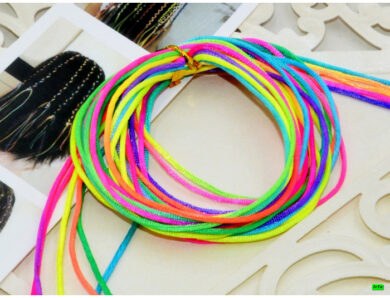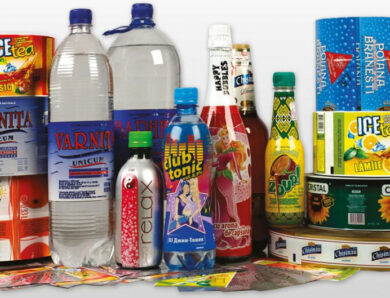Fire coupling: device, principle of operation and characteristics
Fire coupling (PPM) or clipping is a product, used for passive protection against the spread of fire in the event of a communication fire. This element is mounted at those points, where the pipeline crosses various fences. Such couplings are used in various polymer communications: plumbing, sewer systems, etc.. D.
Fire couplings prevent the spread of fire on communication lines in case of fire
Scope of fire couplings
To date, pipes made of modern polymers have become very popular in the construction market: polypropylene (PP), polyethylene (PE) and PVC (Pvc). It has to do with that, that the cost of plastic products is lower, than on metal analogues, and transportation and installation of such polymer pipes is simple due to their low weight.
Plastic pipes are widespread and used almost everywhere. It is worth noting, that they are laid not only for economic purposes, but also at different enterprises. Water supply and sewerage systems made of polymeric materials pass through many floors.
Importantly! Installation of fire compartments is a must, regulated by the fire safety regulations of the Federal Law 123 from 22.07.2008.
In case of fire and spread of fire, the plastic pipe softens from high temperatures. Temperature, necessary for that, so that the polymer communication begins to melt, is approximately 180 ° C. At this temperature, the pipes soften, and then burn out, due to which the fire can spread to adjacent floors through holes, formed in the floors.
Self-activating fire cut-offs operate on the principle of conventional fixing elements for pipelines. In sewer systems, this principle looks like this: the coupling connects the pipeline, which does not have a special connecting element - the bell. The service life of such couplings may be 50 years. The main difference between a fire clutch and a conventional clamp is, that inside the cut-off is a special polymer liner, which expands under the influence of high temperatures.
Such couplings are used in communications for various purposes and for pipes of all diameters
Fire couplings act as a barrier, eliminating the possibility of spreading fire and smoke through ceilings and walls. In case of fire, PPM couplings block the passage of polymer pipes through the floors and walls, by expanding the polymer liner.
Requirements for fire couplings
PPM are used for that, to prevent the fire from spreading to neighboring floors, therefore their installation is recommended, especially in those cases, when the communication is located at the enterprise.
The fire coupling contains a special substance, which at high temperatures increases in volume to 10 times. The direction of expansion of this substance as internal (inside the pipe), and external. Based on this, it is possible to note that, that the substance of the fire-fighting coupling fills openings in interfloor overlappings and walls, blocking the free access of oxygen and stopping the fire.
exept this, in accordance with fire safety regulations (PPB), such devices are mounted to create belts in residential and industrial buildings.
Consider the main types of pipes, on which installation of fire cuttings is recommended:
- storm sewer pipelines. In this case installation of cut-offs is carried out at transition of communication through an overlapping plate (at the entrance to the building);
- plastic sewer pipes. The rules say, that at passage of technical floors and an exit to a roof installation of fire-prevention couplings is recommended;
- plastic water pipes. It is recommended to equip plumbing, made of plastic clippings in places of passage through the floors.
Most often, such couplings are installed in the passage of pipes through the floor
exept this, in the regulatory documentation said, that the installation of cut-offs is absolutely necessary in the case, if the communication is made of such a polymer, as polypropylene.
Advantages of fire couplings
Like any other product, fire couplings have some advantages of use. Consider the main advantages of such devices:
- clippings are made of refractory materials. Thermodynamic material provides reliability when clogging technical holes;
- ease of installation and, exept this, the ability to quickly disassemble the device;
- no special tools or equipment are required to install the fire clutch. It is enough to have a perforator and fixing elements (dowels);
- fire cut-off has high resistance to corrosion;
- fire couplings have a high coefficient of moisture resistance, which allows you to mount these devices in high humidity;
- the service life of this device, usually, is close 50 years, however, some variance of expiration date depending on the manufacturer is possible.
Fire couplings have many positive qualities, their use is recommended by the relevant documentation. The efficiency and reliability of these devices, as well as long service life, allowed them to take a strong position in the construction market.
Device and materials, used for the manufacture of individual elements of PPM
Structural elements, which are a part of cut-offs are made of various materials and, in accordance, have some differences in technical characteristics.
pay attention! Fire clutch, usually, consists of two main components: metal housing and polymer liner.
The coupling body is made of metal, inside the part is a polymer liner
Consider the materials, from which separate components of PPM are executed:
1. Frame. The case of the fire-prevention coupling is made of steel, obtained by cold rolling or galvanizing. Housing thickness (cuffs) can be from 0,5 to 2 mm. exept this, it is worth noting, that at the stage of production the case is painted with weather-resistant paint.
2. Lock. He, usually, is made of strong galvanized steel. Lock connection (as well as the case) has a protective layer of paint, which guarantees a long service life of this element of the fire coupling.
The main technical characteristics of fire couplings are presented in the table below.
Table 1
|
Do mufti, mm |
Outer diameter, mm |
weight, kg |
| 160 | 210 | 1,25 |
| 110 | 130 | 0,26 |
| 50 | 65 | 0,15 |
| 40 | 54 | 0,08 |
| 32 | 46 | 0,07 |
| 25 | 35 | 0,065 |
| 20 | 33 | 0,06 |
3. Broken (within) teeth. Teeth perform two functions:
- inlet function, holding the polymer refractory liner inside the part;
- guiding function, providing expansion of the liner during the fire in the right directions, which contributes to the rapid blockage of the technological hole.
4. Fastening petals. Such elements are fixed with a hole, effortlessly bend and have a length 35 mm. This length provides easy and convenient installation. exept this, it is worth noting, that most companies produce customized custom parts. Such parts may have mounting petals from 70 mm and more. Fire cut-offs with such petals are mounted on pipes, which are laid in metal casings. This technology is used in the construction of monolithic buildings.
Fire couplings can differ in appearance and have different types of locks
Stages of installation of the fire coupling
Installation of fire-fighting sections does not require the use of special equipment and is quite simple. Consider the phased installation of PPM on the pipe:
- First you need to move the mounting petals of the product to the working position. To do this, they need to bend at right angles (90 °).
- In the second stage it is necessary to unfold the coupling, then put it on the pipe.
- Further, it is necessary to mark places on a wall or an interfloor overlapping, in which fastening of the fire-prevention coupling will be carried out. This is done very simply - through the holes in the mounting petals.
- At this stage it is necessary to drill holes at the previously mentioned points.
- Ordinary dowels are hammered into the holes.
- Further, it is necessary to put a polymer thermodynamic liner on the pipeline.
- Then the PPM housing is attached to the polymer liner.
- In the eighth stage, the housing is tightened with a metal lock connection. It is worth noting, that the design of the lock in different models may differ.
- Further, it is necessary to fix the received design on a wall or overlapping. This will require anchor bolts.
- Niche, in which the fire coupling is mounted, laid with cement mortar.
Useful Information! It is recommended to use only metal dowels in order to fix the PPM on the work surface. It has to do with that, that during a fire plastic fasteners, probably, will melt.
Fire safety must be ensured at any destination, and piping systems are no exception. Couplings are simple, but effective products, used as household, and industrial conditions.




